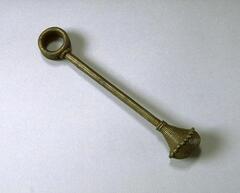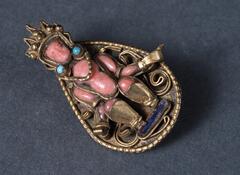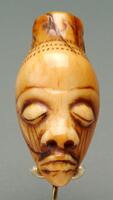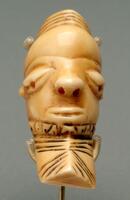17 UMMA Objects
17 UMMA Objects
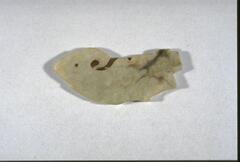
Chinese (Chinese (culture or style))
Zoomorphic pendant
8700 BCE
Museum purchase from the collection of Max Loehr
1960/2.95
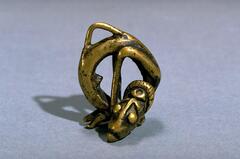
Dogon (Dogon (culture or style))
Pendant
1915 – 1925
Museum Purchase made possible by the Friends of the Museum of Art
1983/2.159
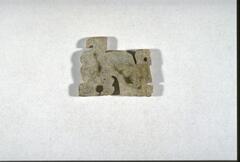
Chinese (Chinese (culture or style))
Dragon pendant
8700 BCE
Museum purchase from the collection of Max Loehr
1960/2.113
![It looks like a rescent, animal's tooth or fetus. There is a hole and some carved line on the head part.<br />
<br />
This is a comma-shaped bead made from dark green jade. Such crescent moon-shaped beads, referred to as<em> gogok</em>, were used to decorate golden crowns, clothing, and belts. This example, which was attached to other ornaments via the hole in its head, is typical of comma-shaped beads of the Three Kingdoms period. Three parallel lines are incised across the hole, from which four more incised lines radiate upwards.<br />
[Korean Collection, University of Michigan Museum of Art (2017) p.33] It looks like a rescent, animal's tooth or fetus. There is a hole and some carved line on the head part.<br />
<br />
This is a comma-shaped bead made from dark green jade. Such crescent moon-shaped beads, referred to as<em> gogok</em>, were used to decorate golden crowns, clothing, and belts. This example, which was attached to other ornaments via the hole in its head, is typical of comma-shaped beads of the Three Kingdoms period. Three parallel lines are incised across the hole, from which four more incised lines radiate upwards.<br />
[Korean Collection, University of Michigan Museum of Art (2017) p.33]](/media/W1siZiIsIjIwMjIvMDUvMjUvNXUwNHN1cTN0Y19kZWZhdWx0LmpwZyJdLFsicCIsInRodW1iIiwiMjQweDIwMCJdXQ?sha=70118906356121f7)
Korean (Korean (culture or style))
Comma-shaped Pendant
400 – 599
Museum purchase made possible by the Margaret Watson Parker Art Collection Fund
1983/1.152
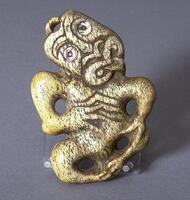
Maori;Polynesian (Maori (culture or style))
Hei Tiki pendant
1885 – 1895
Museum purchase made possible by the Margaret Watson Parker Art Collection Fund
1986/2.101
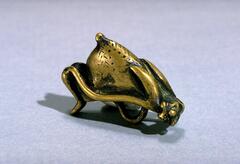
Dogon (Dogon (culture or style))
Pendant
1945 – 1955
Gift of Dr. Allen F. Roberts in memory of Sidney H. Roberts
1983/2.143
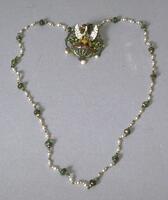
Chinese (Chinese (culture or style))
Metal and enamel figural decorated pendant with attached necklace set with small pearls and 18 diamond chips
1875 – 1912
Gift of Colonel and Mrs. Thomas M. Spaulding
1968/1.53
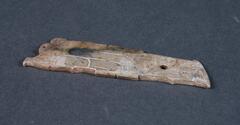
Chinese (Chinese (culture or style))
Animal Pendant, Tortoise
8500 BCE
Gift of Ellen and Richard Laing
2006/2.62
Loading…
